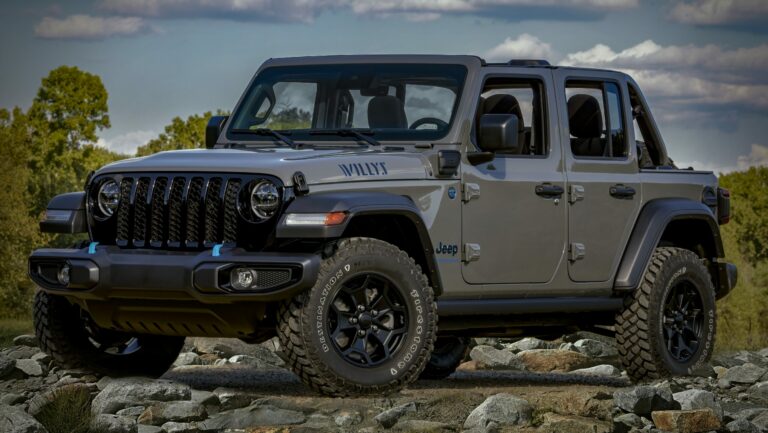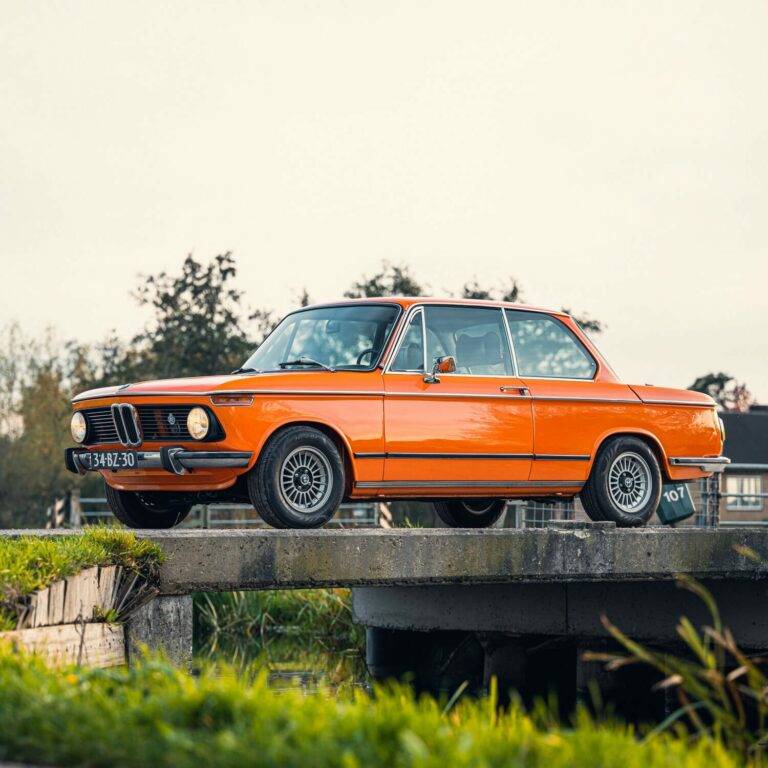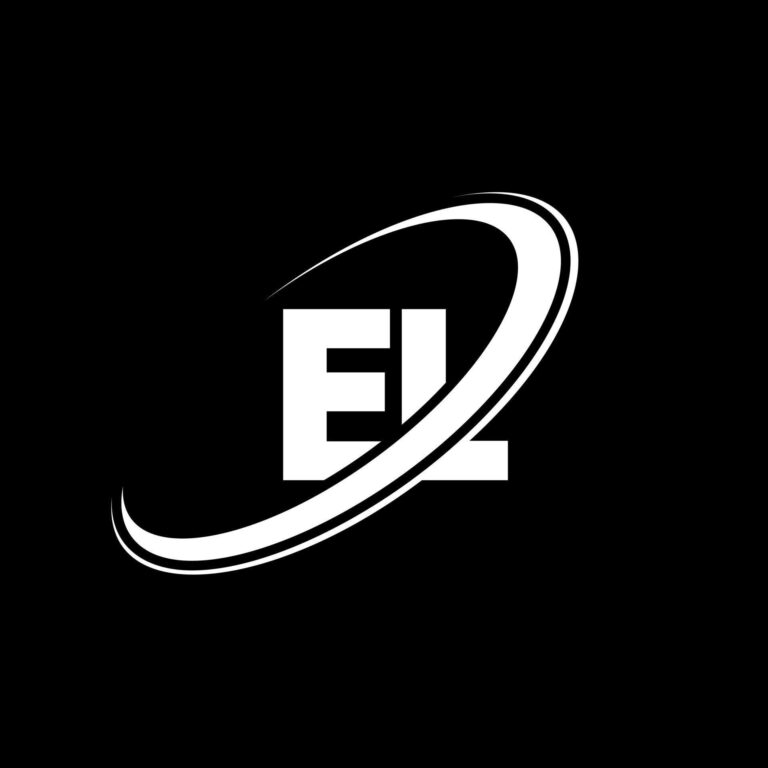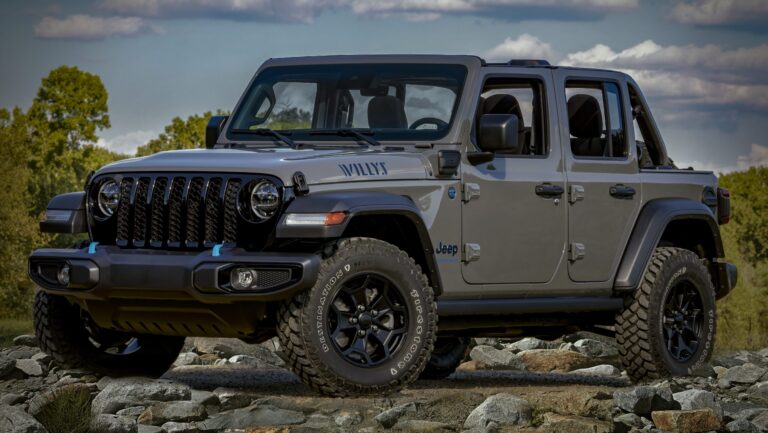The Unseen Backbone: A Comprehensive Guide to Jeep Wrangler TJ Frames For Sale
The Unseen Backbone: A Comprehensive Guide to Jeep Wrangler TJ Frames For Sale jeeps.truckstrend.com
The Jeep Wrangler TJ, produced from 1997 to 2006, holds a special place in the hearts of off-road enthusiasts and daily drivers alike. Known for its coil-spring suspension, improved ride quality over its YJ predecessor, and classic round headlights, the TJ is a robust and highly capable vehicle. However, like any vehicle of its age, the TJ is susceptible to the relentless march of time, and one of its most critical components – the frame – often bears the brunt of environmental wear, particularly rust.
For many TJ owners, discovering a severely rusted or damaged frame can feel like a death knell for their beloved Jeep. Yet, it doesn’t have to be. The availability of "Jeep Wrangler TJ Frame For Sale" offers a lifeline, providing an opportunity to revitalize a classic and ensure its longevity and safety. A solid frame is the very foundation of your vehicle, dictating everything from structural integrity and handling to safety and overall performance. Replacing a compromised frame isn’t just a repair; it’s an investment in the future of your TJ, transforming it from a potential rust bucket into a reliable, trail-ready machine once more. This comprehensive guide will delve into every aspect of acquiring and understanding Jeep Wrangler TJ frames for sale, offering insights, practical advice, and essential considerations for anyone embarking on this significant restoration journey.
The Unseen Backbone: A Comprehensive Guide to Jeep Wrangler TJ Frames For Sale
Why Consider a Replacement TJ Frame? Addressing the Core Issues
The decision to replace a Jeep Wrangler TJ frame is rarely taken lightly. It’s a substantial undertaking, but often a necessary one due to several prevalent issues that plague these vehicles:
- Frame Rust and Corrosion: This is by far the most common culprit. TJs, especially those from regions that experience harsh winters and road salt, are notorious for frame rot. Critical areas include the rear control arm mounts, the skid plate area, the body mounts, and sections around the steering box and front shock towers. Rust compromises the frame’s structural integrity, leading to dangerous weakening, cracks, and potential component detachment.
- Accident Damage: A severe impact can twist, bend, or crack the frame beyond repair. While some minor frame damage can be straightened, extensive deformation often necessitates a full replacement to ensure proper alignment and safety.
- Custom Builds and Restorations: For enthusiasts undertaking a full frame-off restoration or a custom build (e.g., an LS swap, stretched wheelbase), starting with a brand-new or meticulously refurbished frame provides the ideal, uncompromised foundation. It eliminates hidden issues and ensures peak performance for specialized modifications.
- Increased Vehicle Value and Safety: A sound frame significantly enhances the vehicle’s safety, improves handling characteristics, and increases its market value. A rusted frame is a liability; a solid one is an asset.

Types of TJ Frames Available: Navigating Your Options
When searching for a Jeep Wrangler TJ frame for sale, you’ll encounter a few distinct categories, each with its own set of pros, cons, and price points:
-
Used/Salvage Frames:

- Pros: Generally the most affordable option.
- Cons: Condition is highly variable. They often come with varying degrees of rust, potential bends, or previous, possibly subpar, repairs. Thorough inspection is paramount.
- Where to Find: Local salvage yards, online marketplaces (eBay, Facebook Marketplace, Craigslist), dedicated Jeep forums, and auto parts recyclers.
- Considerations: Expect to do significant cleaning, rust removal, sandblasting, and potentially minor repairs yourself.

-
Refurbished/Reconditioned Frames:
- Pros: These frames have typically been stripped, sandblasted, inspected for damage, repaired as needed, and often primered or painted. They offer a significant step up in quality from raw used frames, saving you considerable prep work.
- Cons: Higher cost than raw used frames. The quality of refurbishment can vary, so inquire about the process and materials used.
- Where to Find: Specialized Jeep restoration shops, certain online vendors, and custom fabrication shops.
- Considerations: Still require a careful visual inspection to ensure the quality of repairs and coatings.
-
New Reproduction Frames:
- Pros: These are brand-new frames manufactured to original or even improved specifications. They are perfectly straight, free of rust, and offer the highest level of structural integrity. Some aftermarket manufacturers incorporate thicker steel in common rust areas for enhanced durability.
- Cons: The most expensive option by a significant margin.
- Where to Find: Major aftermarket Jeep parts retailers (e.g., Quadratec, Morris 4×4, Classic 2 Current Fabrication), and some specialized fabricators.
- Considerations: Often come bare steel, requiring you to apply your preferred rust-preventative coating and paint.
What to Look For: Critical Inspection Points When Buying a TJ Frame
Regardless of the type of frame you’re considering, a meticulous inspection is non-negotiable. This is the backbone of your vehicle; don’t compromise.
- Rust (The Silent Killer):
- Common Trouble Spots: Pay extreme attention to the rear control arm mounts (upper and lower), the area around the transfer case skid plate, body mounts, front shock towers, and the steering box mount.
- Inspection Method: Visually inspect for bubbling paint, flaking rust, and holes. Use a small hammer or pick to tap on suspicious areas; a solid "thunk" is good, a hollow sound or penetration indicates serious rust. Check inside the frame rails where possible with an inspection camera.
- Straightness and Alignment:
- Visual Check: Look down the length of the frame from front to back and side to side. Any visible kinks, twists, or bends are red flags.
- Measurement: If possible, measure diagonally from opposing corners, and check crossmember distances. While not as precise as a laser alignment, it can reveal gross deformities.
- Professional Assessment: For significant purchases, consider having a body shop or frame specialist verify its straightness.
- Damage and Previous Repairs:
- Cracks: Inspect all welds and stress points for cracks, especially around suspension mounts and crossmembers.
- Welds: Look for signs of amateur welding or poor repairs. Patchwork or uneven welds can indicate underlying damage or structural weakness.
- Bent Crossmembers: Ensure all crossmembers are intact and straight.
- VIN Matching and Paperwork:
- Legal Implications: The frame typically carries the vehicle’s VIN. If you’re replacing your frame, you’ll likely need to transfer the VIN from your old frame to the new one or follow specific state-by-state procedures for frame replacement and registration. Ensure the seller provides clear documentation for the frame.
- Clean For used frames, ensure it’s not from a stolen vehicle or a vehicle with a salvage title that prohibits re-registration.
- Completeness:
- Mounts: Does the frame come with all necessary engine mounts, transmission mounts, body mounts, and suspension mounting points intact and in good condition? Replacing these can add significant cost and complexity.
- Hardware: While often not included, ask if any original hardware (bolts, nuts) comes with it.
The Process of a Frame Swap: A Glimpse into the Undertaking
A TJ frame swap is a major mechanical project, not for the faint of heart. While a detailed "how-to" is beyond the scope of this article, here’s an overview of the process:
- Preparation: Secure a spacious, level work area. Gather all necessary tools, including jacks, jack stands, an engine hoist or body lift, air tools, and specialized wrenches. Safety gear is paramount.
- Disassembly: This is the most labor-intensive part. It involves:
- Disconnecting and labeling all wiring harnesses, fuel lines, brake lines, and steering components.
- Removing the body from the old frame (often requiring a lift or multiple strong helpers).
- Separating the engine, transmission, transfer case, axles, suspension, and steering box from the old frame.
- Frame Preparation: Clean, inspect, and prepare the new frame. This might involve sandblasting, rust-proofing, and painting.
- Reassembly: Carefully transfer all components from the old frame to the new one. This is essentially reversing the disassembly process, paying close attention to torque specifications, proper routing of lines, and alignment of components.
- Post-Swap Checks:
- Alignment: A professional wheel alignment is critical after reassembly.
- Fluid Checks: Top off or replace all fluids.
- Test Drive: Begin with short, slow test drives, listening for unusual noises and checking all systems.
- Re-torque: Re-torque all suspension and body mount bolts after a few hundred miles of driving.
Challenges: Be prepared for seized bolts, unexpected component wear, and the sheer volume of parts. Having a second set of hands is invaluable.
Cost Implications and Budgeting
The cost of a TJ frame swap extends far beyond just the frame itself. Budgeting meticulously is crucial:
- Frame Purchase Price: As detailed in the table below, this can range from a few hundred dollars to several thousand.
- Shipping Costs: Due to their size and weight, shipping a frame can be substantial, often $300-$800 or more within the contiguous US. Local pickup is ideal if possible.
- Additional Parts: Expect to replace many "consumable" parts during the swap:
- New body mount bushings and hardware.
- New brake lines (often a good time to upgrade to stainless).
- New fuel lines.
- Potentially new suspension bushings, shocks, or control arms.
- Steering components (tie rod ends, drag link).
- Miscellaneous nuts, bolts, and clips.
- Paint/Coating: Costs for sandblasting, primer, and topcoat if not included with the frame.
- Professional Labor: If you’re not doing the work yourself, labor costs for a complete frame swap can easily be $3,000 to $8,000+, depending on shop rates and complexity.
- Hidden Costs: Budget an extra 10-20% for unexpected discoveries, specialized tools, or forgotten items.
Tips for a Successful TJ Frame Purchase & Swap
- Research Thoroughly: Understand the scope of the project before you begin. Watch videos, read forums, and talk to others who have done it.
- Inspect, Inspect, Inspect: Never buy a frame sight unseen if possible. If buying remotely, demand detailed photos and videos, and consider using a third-party inspector.
- Factor in Shipping: Get a firm shipping quote before committing to a purchase.
- Document Everything: Take photos and videos during disassembly. Label every wire, hose, and bolt. This will save countless hours during reassembly.
- Plan Your Budget: Account for all potential costs, not just the frame.
- Join Online Communities: Jeep forums and Facebook groups are invaluable resources for advice, troubleshooting, and finding parts.
- Don’t Rush: A frame swap is not a weekend project. Take your time, be methodical, and don’t cut corners.
Jeep Wrangler TJ Frame For Sale: Estimated Price Table
Prices are highly variable based on condition, seller, location, and market demand. These are general estimates.
| Frame Type | Condition | Typical Price Range (USD) | Key Notes | Estimated Shipping (USD) |
|---|---|---|---|---|
| Used / Salvage | Fair | $500 – $1,500 | Significant surface rust, potential for localized rot (e.g., body mounts, control arm pockets), may have minor bends. Requires extensive cleaning, sandblasting, and repair work. Buyer beware; best for experienced fabricators. | $300 – $800+ |
| Good | $1,500 – $2,500 | Moderate surface rust only, generally straight, all mounts intact. May require sandblasting and coating but minimal structural repair. A solid starting point for a DIY restoration. | $300 – $800+ | |
| Refurbished | Very Good | $2,500 – $4,000 | Stripped, sandblasted, rust removed, minor repairs completed. Often primered or coated. Ready for components to be installed. Quality of work varies by vendor. | $300 – $800+ |
| Excellent | $4,000 – $5,500 | Professionally restored to near-new condition. Sandblasted, all rust and damage addressed, high-quality protective coating applied (e.g., POR-15, powder coat). May include minor reinforcements in common weak spots. Near plug-and-play for assembly. | $300 – $800+ | |
| New Reproduction | Brand New | $5,000 – $7,500+ | Freshly manufactured from new steel, perfectly straight, no rust. Often comes bare steel or e-coated. The most durable and structurally sound option, ideal for long-term ownership or high-performance builds. | $300 – $800+ |
Note: Shipping costs are highly dependent on distance, carrier, and whether it’s shipped to a commercial address with a loading dock or a residential address. Always get a firm quote.
Frequently Asked Questions (FAQ) about Jeep Wrangler TJ Frames
Q1: How do I know if my TJ frame is bad enough to require replacement?
A1: Look for excessive rust that creates holes, soft spots (use a hammer to tap), or causes structural components (like control arm mounts or body mounts) to detach or crack. Sagging, uneven ride height, or persistent alignment issues that can’t be corrected by suspension adjustments can also indicate a bent or compromised frame.
Q2: Is a frame swap a DIY project for the average mechanic?
A2: A frame swap is a highly challenging and labor-intensive project. It requires significant mechanical aptitude, specialized tools (engine hoist, body lift, air tools), a large workspace, and considerable time. While possible for a skilled DIYer, many opt for professional assistance, especially for critical steps like body removal and reassembly.
Q3: What’s the biggest challenge in a TJ frame swap?
A3: One of the biggest challenges is often dealing with seized and rusted bolts, especially those connecting the body to the frame or the suspension components. Lifting and aligning the body onto the new frame can also be tricky without proper equipment. Accurately re-routing all wiring, fuel lines, and brake lines is another detail-oriented challenge.
Q4: Do I need to transfer the VIN from my old frame to the new one?
A4: Yes, in most jurisdictions, the VIN is stamped on the frame and is considered part of the vehicle’s identity. You will likely need to transfer the VIN from your old frame to the new one, or follow specific state-by-state procedures for frame replacement. Consult your local Department of Motor Vehicles (DMV) or equivalent authority before starting the project to understand the legal requirements for VIN transfer and registration.
Q5: How much does a complete frame swap typically cost (parts + labor)?
A5: The total cost can vary wildly. If you DIY and source a good used frame, you might keep costs under $5,000-$7,000 (including the frame, basic parts, and consumables). However, if you opt for a new reproduction frame and professional labor, the total cost can easily range from $8,000 to $15,000+, depending on the extent of additional parts needed and labor rates.
Q6: Can I use a frame from any year TJ (1997-2006)?
A6: Generally, yes. The Jeep Wrangler TJ frame design remained largely consistent throughout its 1997-2006 production run. While there might be very minor differences in mounting points for specific ancillary components between early and late models, the core frame dimensions and mounting points for the body, engine, transmission, and axles are consistent. Always double-check with your parts supplier or an experienced TJ mechanic if you have specific year concerns.
Conclusion
The Jeep Wrangler TJ is an icon, and its robust design ensures it can continue to conquer trails and turn heads for decades to come. However, the Achilles’ heel for many TJs is often its frame. Discovering a compromised frame can be disheartening, but the availability of Jeep Wrangler TJ frames for sale provides a clear path to resurrection. Whether you choose a meticulously inspected used frame, a professionally refurbished one, or a brand-new reproduction, the opportunity to give your beloved TJ a new lease on life is within reach.
A frame swap is a significant undertaking, demanding careful planning, a keen eye for detail, and a willingness to get your hands dirty. However, the reward is immense: a structurally sound, safe, and reliable Jeep Wrangler TJ that’s ready for countless more adventures. By understanding the options, knowing what to look for, and meticulously planning your budget and process, you can transform your TJ from a potential garage queen into the capable off-road beast it was always meant to be. This investment in its backbone will ensure your TJ remains a cherished part of your life for years to come.






